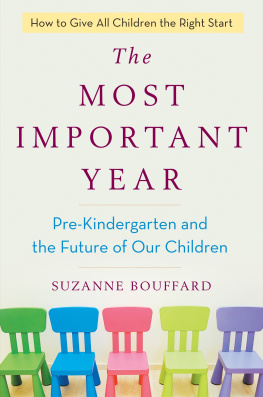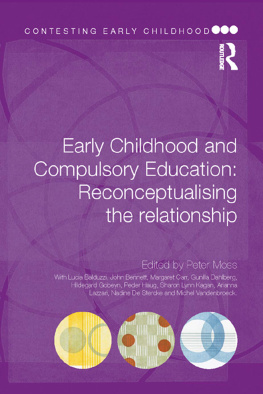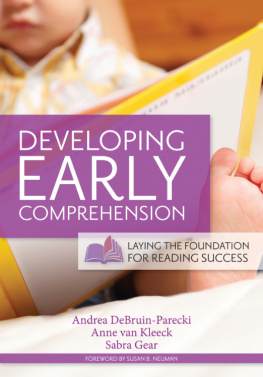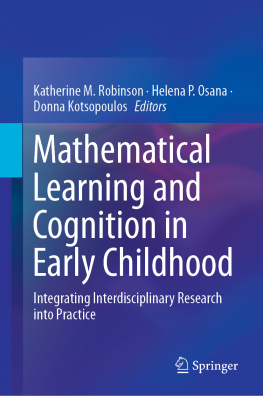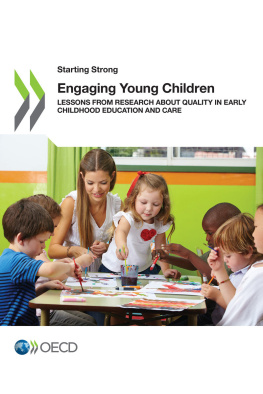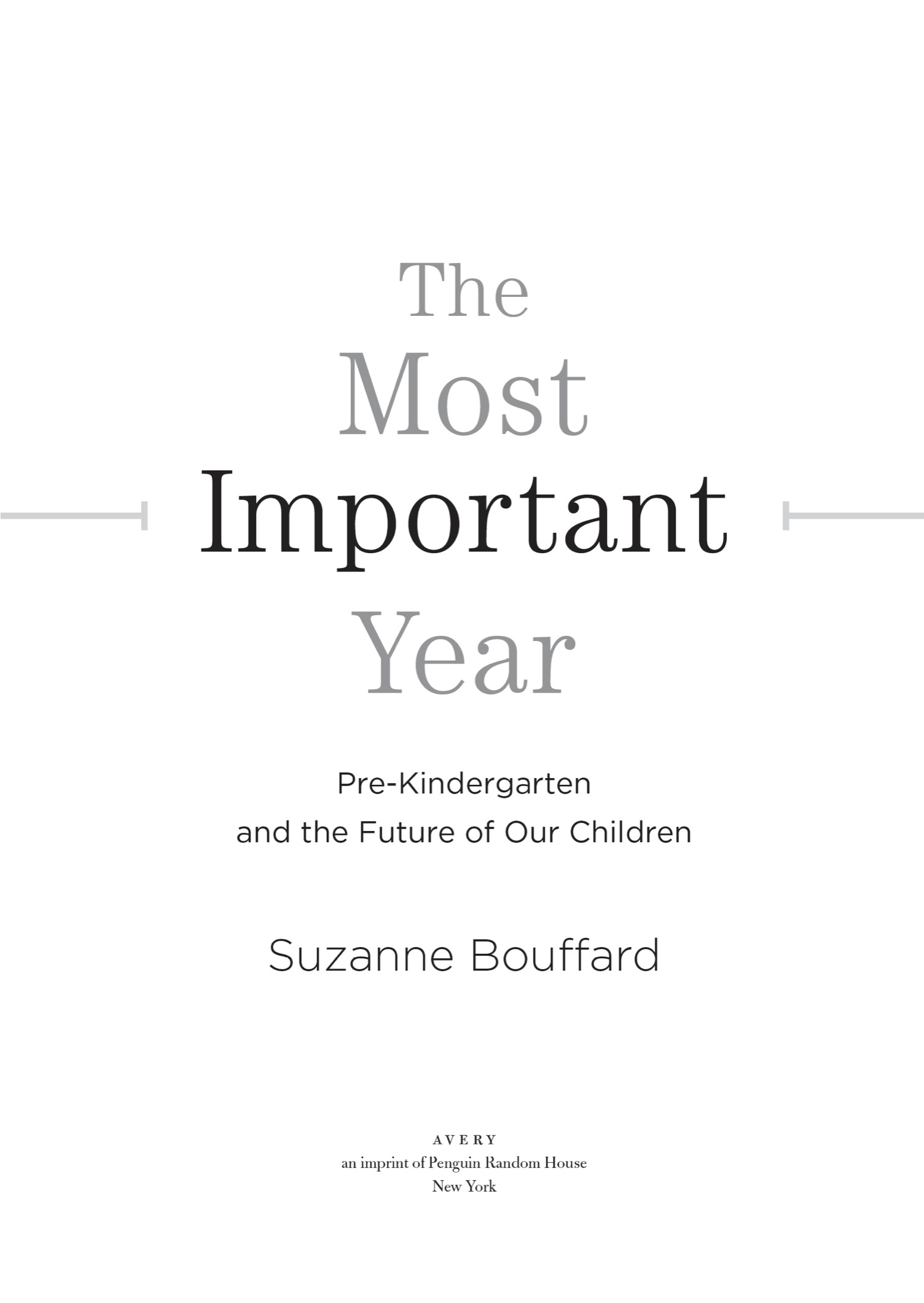
an imprint of Penguin Random House LLC
375 Hudson Street
New York, New York 10014

Copyright 2017 by Suzanne Bouffard
Penguin supports copyright. Copyright fuels creativity, encourages diverse voices, promotes free speech, and creates a vibrant culture. Thank you for buying an authorized edition of this book and for complying with copyright laws by not reproducing, scanning, or distributing any part of it in any form without permission. You are supporting writers and allowing Penguin to continue to publish books for every reader.
Library of Congress Cataloging-in-Publication Data
Names: Bouffard, Suzanne M., author.
Title: The most important year : pre-kindergarten and the future of our children / Suzanne Bouffard.
Description: New York, New York : Avery, 2017. | Includes bibliographical references and index.
Identifiers: LCCN 2017031130| ISBN 9780399184949 (hardback) | ISBN 9780399184963 (epub)
Subjects: LCSH: Early childhood educationUnited States. | Early childhood educationSocial aspectsUnited States. | Education, PreschoolUnited States. | Education, PreschoolSocial aspectsUnited States. | Children with social disabilitiesEducation (Preschool)United States. | BISAC: SOCIAL SCIENCE / Childrens Studies. | EDUCATION / Preschool & Kindergarten. | FAMILY & RELATIONSHIPS / Education.
Classification: LCC LB1139.25.B69 2017 | DDC 372.21dc23
LC record available at https://lccn.loc.gov/2017031130
While the author has made every effort to provide accurate telephone numbers, Internet addresses, and other contact information at the time of publication, neither the publisher nor the author assumes any responsibility for errors, or for changes that occur after publication. Further, the publisher does not have any control over and does not assume any responsibility for author or third-party websites or their content.
Version_1
For Theo and Ellis
Contents
Prologue
Sixty parents clustered in the cafeteria of the Eliot K8 Innovation School, some balancing toddlers on their hips, others finishing their morning coffee. Welcome to the best public school in Boston! Principal Traci Griffith greeted them, warmly and without the ego that one might imagine to accompany such a statement. It wasnt long into her overview, which she had been giving for months during similar school tours, before an anxious parent asked, How many pre-K spots do you have for next year? We have thirty-two seats, Griffith replied smoothly, quickly adding, But we have four kindergarten classrooms, so that means there are forty-four new seats in kindergarten every year. That provided little reassurance for the parents who would soon be entering their four-year-olds in the Boston Public Schools (BPS) lottery. Griffith didnt have to say what many already knew: all but three of the Eliots current pre-K students had been virtually guaranteed a spot because they had a sibling already attending the school.
The odds were long for Luca Murthy, but he was blissfully unaware of the stress his parents and so many others were carrying. Luca was only three and was more concerned with Legos than lotteries. But he would turn four before the next school year, making him eligible for one of the nations most successful public pre-kindergarten programs, or what the Boston Public Schools call K1. (The grade traditionally called kindergarten is known as K2.) Luca, his familys firstborn, wouldnt have the advantage of a sibling spot at the Eliot, and he wasnt guaranteed a K1 spot at all. The Boston program serves only about twenty-five hundred children, around half the citys four-year-olds.
Above the cafeteria, in Jodi Krouss classroom, it was easy to see why parents wanted to send their children to the Eliot for pre-K. Sixteen children were engrossed in activities set up at tiny natural-wood furniture and in woven baskets full of books, puzzles, and art supplies. They were energetic and talkative, but calm and focused. On the rug, some used large wooden blocks to experiment with ramps and how fast toy cars would go depending on the angle of the blocks. At the easel, Krous asked two girls what they were painting and wrote their responses on the bottom of the paper so that when she hung it up later, everyone could see their thought processes. A quiet, reluctant boy got a hug from Krous and a reminder that his mother would be coming home from a business trip that night. Yesterday you made a great double-decker bus out of Play-Doh. Do you want to make another one? Krous suggested. Oh, look, your friend wants to know what a double-decker bus is! She bent down, gently touching the boys shoulders, encouraging him to look directly at the other child and share his expertise with her. Krous had told me that she chose to teach at the Eliot because you feel a lot of joyfulness here, and the parents on the tour seemed to sense it, too.
Krous seemed to accomplish the impossible task of noticing everything happening in the room at once, providing just the right question or comment to nudge the children to think a little more deeply. When a child proudly approached her with a book he had made using familiar story characters, she shared his enthusiasm and then prodded him to write down the words the characters might say. Watching children mixing and painting with watercolors, she asked them, What happens when you use different-sized paintbrushes? When she used the word water while talking about painting, she noticed that a nonverbal child used sign language to say drink, showing she heard Krouss words. Another boy came over to show her how he had pasted the letters of his name on cardstock. Wow, you have eight letters in your name! Krous exclaimed. Do you have the longest name? Go find Olivias name. Find the one that starts with an O. Now count how many. What about Matthew? When she asked him how he got his correct answer of seven, he cheerfully replied, I counted already!
It was obvious that every moment of the school day was thoughtfully planned to facilitate childrens learning, and that appealed to Lucas mother, Maria Fenwick. An educational consultant and former Boston Public Schools teacher, Fenwick had done her homework. She had long known about the Eliot and been drawn to the hands-on experiential learning that is a hallmark of the school. She had heard that Griffith and her staff were knowledgeable and dedicated, and that was clear in Room 105, from the rhyming songs Krous led during morning meeting to build vocabulary and language skills (How are you, caribou? Im fine, porcupine!) to the way she asked children to tell her stories that would be transcribed and later acted out by the class. Fenwick was particularly impressed with the way that evidence of the students learning covered the walls. At childrens eye level were detailed self-portraits they had drawn during a unit on color, birth certificates created for pretend infants during a unit on families, photographs of block architecture annotated with descriptions of how the children made them. Each childs contribution was unique and creative, no evidence of photocopied worksheets anywhere.
Almost any parent would walk into Krouss classroom and want to send her child there. But few get that opportunity. The thirty-two spots at the Eliot, a nearly hundred-year-old school located in the citys historic North End, are among the most coveted in the district. When I call parents to tell them they have a spot at our school, I get to tell them, You have won the lotteryliterally, says Traci Griffith. Less than ten years ago, however, the Eliot was undersubscribed, ranked near the very bottom of the citys schools, a site of hopelessness and apathy that had been abandoned by neighborhood families. Less than a block away from the Eliot are a statue of school alumnus Paul Revere in the spot where he began his famous midnight ride, and the Old North Church, where patriots hung lanterns to give the one if by land, two if by sea signal. The change that has taken place at the Eliot has been less fiery than the war fought by the American patriots, but no less transformational. The introduction of the K1 program was not solely responsible for the transformation, but it played an important role, drumming up parent interest in the school, building early and long-lasting relationships between children and staff, and laying the crucial foundation for school success that high-quality preschool can provide.

